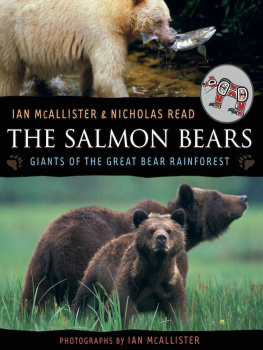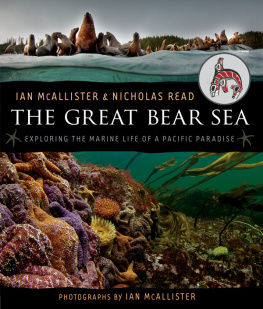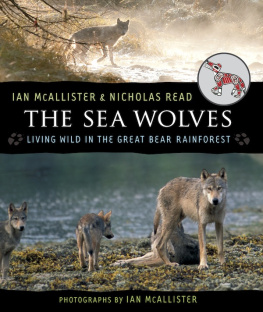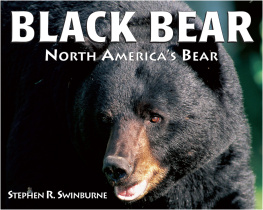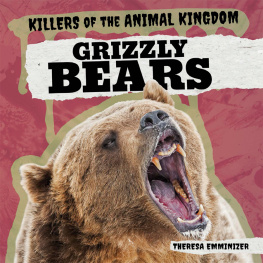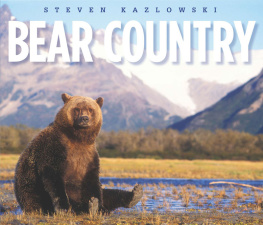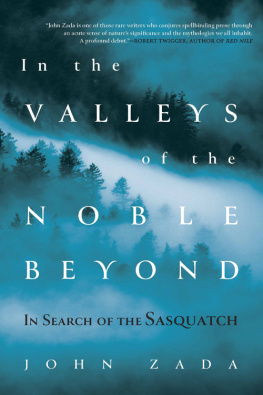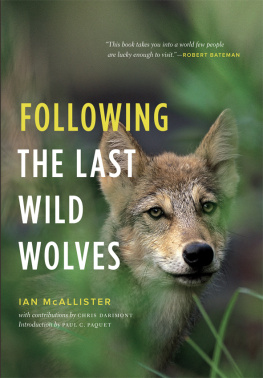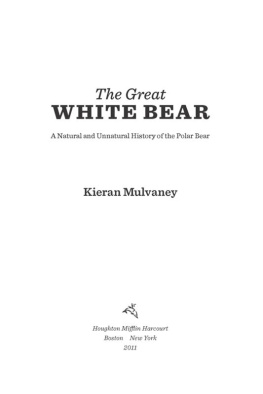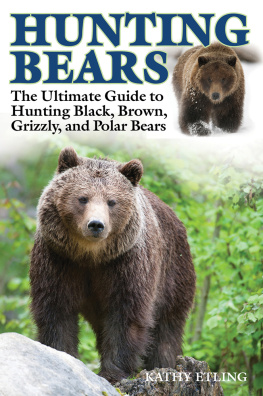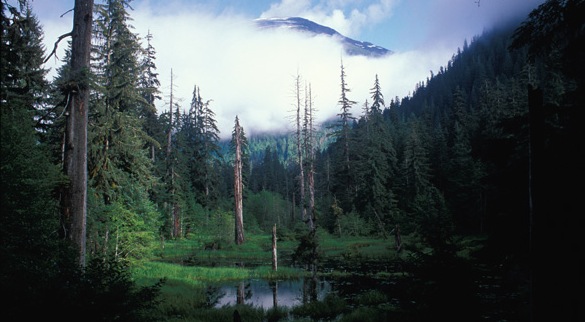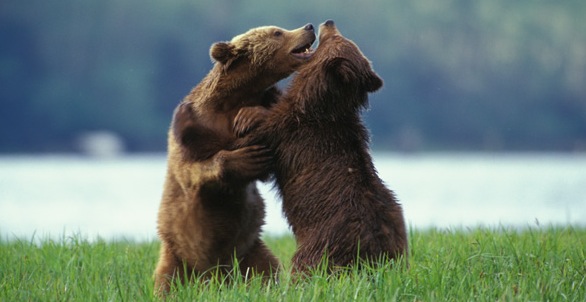Springtime in the Great Bear Rainforest. Two subadult grizzly siblings have a wrestling match along a coastal estuary.
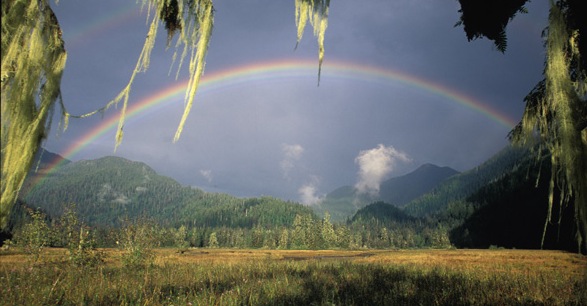
A rainbow breaks through a midsummer storm on a coastal estuary. Estuaries are where the ocean meets the rainforest; they provide important habitat for coastal bears.
But its in the forests where almost everything lives. There are insects so tiny you need a magnifying glass to see them, grizzlies the size of Volkswagens, and animals of every kind, shape and size in between. In fact, these forests support more living matter, what scientists call biomass, than the tropical rainforests in the Amazon. Put another way, even though the Amazon rainforest contains more different species, it doesnt have as much living stuff in it overall. No matter where you look in the Great Bear Rainforestfrom beneath the forest floor to the tops of the tallest treeseverything is alive. And while a few parts of the Amazon have bears, they arent like grizzlies. Grizzly bears are only found in northern ecosystems like this one. But just as in the Amazon, everything that lives in the Great Bear Rainforestplant and animal, large and smallhas a vital role to play in it.
JUST THE BEAR FACTS
What do scientists learn from studying the Great Bear Rainforest?
There probably isnt a single place on Earth that hasnt been disturbed in some way by humans. But compared to most places, the Great Bear Rainforest is still fairly pristine. That means its an ideal place for scientists to learn about plants and animals in what is still a relatively natural environment. But even a place as remote as the Great Bear Rainforest is affected by pollution, trophy hunting and habitat destruction. Scientists have discovered, for example, that chemicals banned years ago in North America, but still allowed in Asia, travel to the rainforest in air and marine currents. These chemicals, which are long-lasting and persistent, find their way into the forests food web. Salmon eat small fish contaminated with them, so they become contaminated too. Then the bears eat the salmon, and they become contaminated. Scientists also have learned that killing large animals like grizzlies for sport can weaken whole populations of bears. Theyve found that when hunters kill the biggest, strongest bears for trophies, smaller, weaker bears take their places and reproduce. This can result in smaller and weaker populations of bears. Scientists are also studying how the overfishing of salmon affects the rainforest.
The Web of Life
Biologists describe this living world as a web of life because all the plants and animals in it depend in some fashion on one another. Each thread in the web represents a kind of plant, insect or animal, so that no matter how small or seemingly insignificant, each and every living thing in the rainforest has an effect on every other living thing. Some plants depend on animals eating parts of them to spread their seeds. Think of birds that eat the fruit off trees, bushes and vines. Other animals, called carnivores, eat other animals. Think of wolves that catch and kill deer, and eagles, hawks and owls that hunt rabbits and other rodents. Sometimes part of an animals body will be left uneaten by a predator. When this happens, whats left of it will be eaten by scavengerseverything from gulls to maggots to bacteria. Over time they will break it down into pieces too tiny to see with the naked eye. But even though theyre tiny, these microscopic bits have a huge impact on the rainforest because of how they enrich its soil. Think of salmon carcasses that lie along the riverbank after spawning. First birds eat them. Then insects. Then bacteria. But they never really disappear. Instead they fill the soil with nutrients, and its these nutrients that feed the rainforest plantseverything from the smallest weed to the tallest tree. Just as in a spiders web, every strand in the web of lifein the rainforestis important. If one or two strands are broken, the web can still hold together. But if too many are cut, it falls apart.
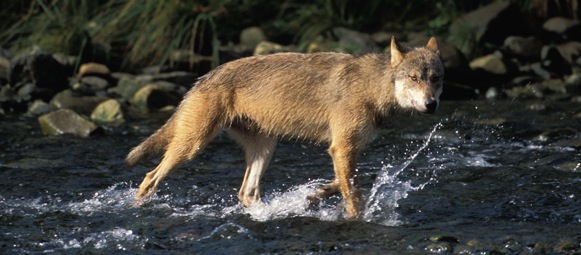
A rainforest wolf searches for salmon in one of the remote rivers of the Great Bear Rainforest. Wolves feed alongside grizzly and black bears in the fall when the salmon come to spawn. But in the spring and summer these species try to avoid each other.
JUST THE BEAR FACTS
Is bigger also better?
Not necessarily. Grizzlies may be bigger and stronger than American blacks, but that isnt always an advantage. Yes, grizzlies can scare away smaller, less powerful animals, but they need more food to keep their bigger, more powerful bodies going. That means they have to work harder to find food. It also means if theres less food around for some reason, grizzlies have a tougher time of it than blacks. Compare it to a car. A compact car may not be as fast or powerful as a 500-horsepower muscle car, but the muscle car is going to need a lot more fuel to get around. Thats why muscle cars are a lot more expensive to run. Its the same with bears. In nature the rule is that the bigger an animal is, the fewer of them there are. And if you doubt that, think about how many bears there are in the world. Then compare that to how many mice there are.

